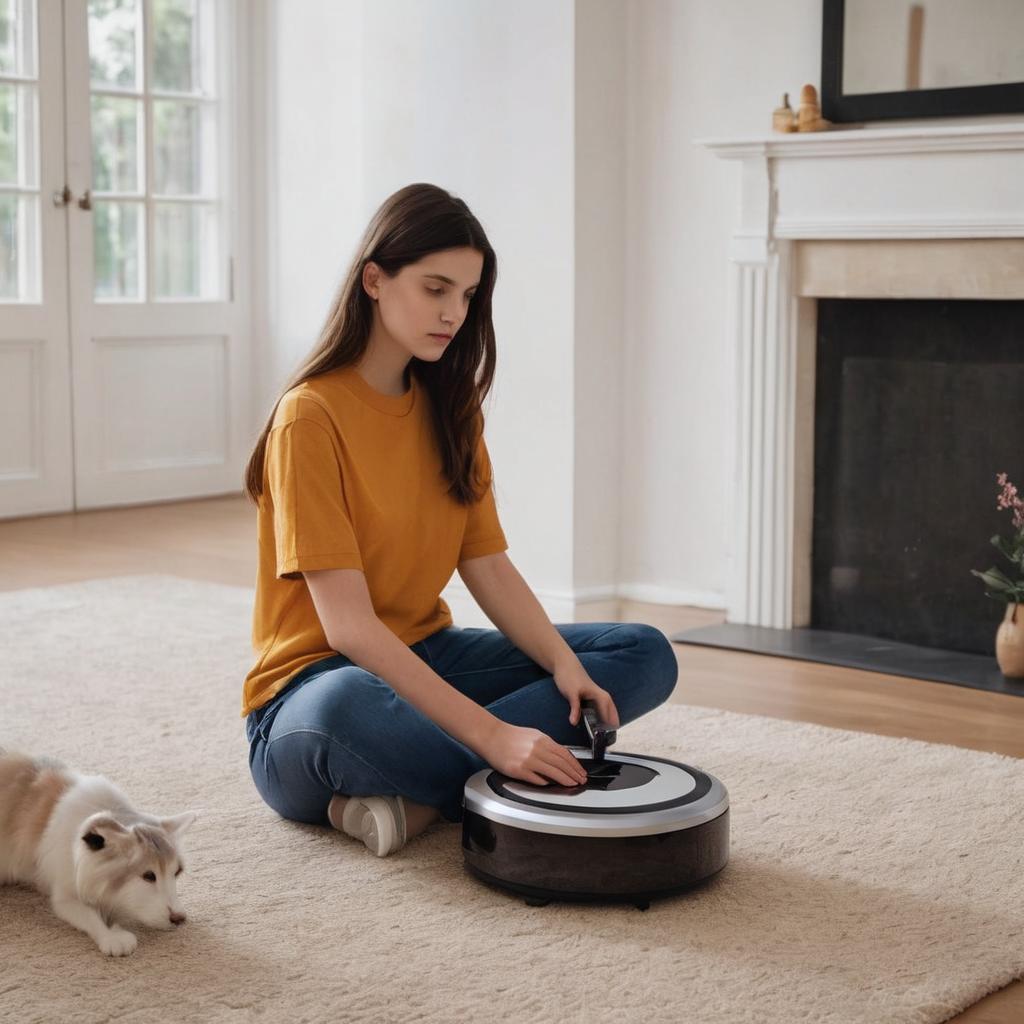Table of contents
In the era of smart homes, where devices are seamlessly interconnected, there’s an increasing trend towards purchasing appliances that can be controlled via smartphones or voice commands. Robot vacuums, in particular, have taken the market by storm, offering the promise of hands-free cleaning. As technology has advanced, many of these robot vacuums come with WiFi capabilities, but does this mean that non-WiFi robot vacuums have become obsolete? Contrary to what one might think, non-WiFi robot vacuums still have a market. Let’s delve into why.

Ease of Use
Non-WiFi robot vacuums offer a plug-and-play experience. Users don’t need to fuss with connecting their vacuums to their home networks or setting up an app on their phones. Simply charge the vacuum, press start, and let it do its job.
Cost-Effectiveness
WiFi capabilities often add to the cost of a robot vacuum. For consumers on a budget, a non-WiFi robot vacuum can provide the benefits of automated cleaning without the extra cost associated with smart features.
Reliability
With fewer features, there’s less that can go wrong. Non-WiFi robot vacuums focus on their primary task: cleaning. This can sometimes mean they’re less prone to glitches or software issues that might plague more feature-rich models.
Privacy Concerns
As with any connected device, smart robot vacuums bring up concerns about data privacy. Even if the data they collect is limited to cleaning maps of your home, some consumers prefer not to take any risks. Non-WiFi robot vacuums don’t store or share data, making them a more private choice.
No Need for Regular Updates
WiFi-enabled devices often require periodic software updates to fix bugs, improve performance, or add features. While updates can be beneficial, they can also sometimes introduce new issues or require the user to reconfigure settings. Non-WiFi robot vacuums eliminate this concern.
Areas with Limited Connectivity
In regions where WiFi connectivity might be spotty or where high-speed internet isn’t readily available, WiFi features in a robot vacuum can be more of a hindrance than a help. For such areas, non-WiFi robot vacuums are a more practical choice.
Preference for Dedicated Controls
While many people appreciate the ability to control appliances via an app, others prefer dedicated remote controls or physical buttons on the device itself. For those who don’t want to rely on a smartphone to operate their vacuum, non-WiFi models can be more appealing.
Battery Longevity
One aspect often overlooked is the battery consumption associated with added features. While the primary task of a robot vacuum is to clean, added functionalities like WiFi connectivity can sometimes draw additional power, albeit minimal. As a result, non-WiFi robot vacuums might, in some cases, offer slightly better battery longevity on a single charge.
Standalone Efficiency
Non-WiFi robot vacuums, by design, are self-reliant. They don’t depend on external factors such as app synchronization, cloud updates, or server downtimes. This ensures that their core functionality remains unaffected by external technological issues.
Fewer Security Concerns
Beyond just data privacy, there are also concerns about the security vulnerabilities of connected devices. As more devices get interconnected, the risk of potential hacking or unauthorized access increases. By choosing a non-WiFi robot vacuum, consumers can alleviate these concerns entirely.
Simplicity for Elderly and Technologically-Challenged Users
For the elderly or those who might not be tech-savvy, setting up and managing a WiFi-connected device can be daunting. Non-WiFi robot vacuums offer a more straightforward approach. With fewer settings and potential points of confusion, they can be particularly suitable for individuals who prefer a no-fuss approach to technology.
Resale and Second-hand Markets
In regions where the latest tech isn’t always immediately accessible, or among consumers who are more budget-conscious, there’s a thriving market for second-hand appliances. Older robot vacuum models, which typically lack WiFi, still have demand in these markets due to their affordability and primary cleaning functionality.
Wrap Up
In conclusion, although the momentum seems to be tilting in favor of WiFi-connected appliances, there is no one-size-fits-all answer in the world of robot vacuums. Non-WiFi robot vacuums, with their distinct advantages and appeal to a particular demographic, still hold their ground in the market. Manufacturers and retailers alike would benefit from understanding this nuanced landscape, catering to the diverse needs of consumers and offering a range of products that suit different lifestyles and budgets.
